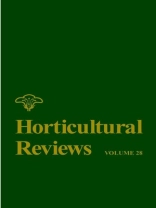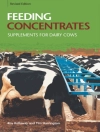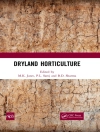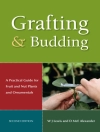Horticultural Reviews, Volume 28 presents state-of-the-art reviews on topics in horticultural sciences. The emphasis is on applied topics including the production of fruits, vegetables, nut crops, and ornamental plants of commercial importance.
Table of Content
Contributors.
Dedication: M. Allen Stevens (Fredrick A. Bliss).
1. Plant Nomenclature and Taxonomy:An Horticultural and Agronomic Perspective (David M. Spooner, Wilbert L. A. Hetterscheid, Ronald G. van den Berg, and Willem Brandenburg).
I. Introduction.
II. Species Concepts in Wild Plants.
III. Classification Philosophies in Wildand Cultivated Plants.
IV. Brief History of Nomenclature and Codes.
V. Fundamental Differences in the Classificationand Nomenclature of Cultivated and Wild Plants.
VI. A Comparison of the ICBN and ICNCP.
VII. Possible New Codes.
VIII. Cultivated Plant Nomenclature and the Law.
IX. Cultivar Epithets and Trademarks.
X. Recommendations for a Universally Stable Crop Nomenclature Through Changesand Use of the ICNCP.
References.
Literature Cited.
2. Grafting of Herbaceous Vegetableand Ornamental Crops (Jung-Myung Lee and Masayuki Oda).
I. Introduction.
II. Grafting Technology.
III. Physiology of Grafting.
IV. Crop Examples.
V. Grafting for Crop Improvement.
VI. Conclusion and Prospects Literature Cited.
3. Health Promoting Phytochemicals in Vegetables (Mosbah M. Kushad, John Masiunas, Kathy Eastman, Wilhelmina Kalt, and Mary A. L. Smith).
I. Introduction.
II. Major Classes of Phytochemicals in Vegetable.
III. Phytochemicals Content and Health Benefitsof the Four Major Vegetable Groups.
IV. Conclusions and Future Research Needs.
Literature Cited.
4. Detection and Elimination of Viruses and Phytoplasmas from Pome and Stone Fruit Trees (Margit Laimer).
I. Introduction.
II. Pathogens.
III. Pathogen Detection.
IV. Elimination of Viruses.
V. Elimination of Phytoplasmas.
VI. Indexing, Mass Propagation, and Germplasm Conservation.
VII. Conclusions.
Literature Cited.
5. Pear Fruit Volatiles (Francesca Rapparini and Stefano Predieri).
I. Introduction.
II. Analysis of Chemical Composition.
III. Biogenesis.
IV. Factors Affecting Qualitative and Quantitative Emission of Pear Volatiles.
V. Volatile Compounds Influence on Quality.
VI. Summary and Conclusions.
Literature Cited.
6. The Physiology of Flowering in Strawberry (Rebecca L. Darnell, Daniel J. Cantliffe, Daniel S. Kirschbaum, and Craig K. Chandler).
I. Introduction.
II. Floral Morphology.
III. Environmental Effects on Reproductive Growth.
IV. Floral Induction Models.
V. Genetics of Floral Induction.
VI. Conclusions.
Literature Cited.
7. Flower and Fruit Thinning of Peachand other Prunus (Ross E. Byers, Guglielmo Costa, and Giannina Vizzotto).
I. Introduction.
II. Reproductive Physiology.
III. Abscission.
IV. Thinning Practices.
V. Future Prospects.
Literature Cited.
8. The Reproductive Biology of the Lychee (Raphael A. Stern and Shmuel Gazit).
I. Introduction.
II. Flowering.
III. Pollination.
IV. The Fertilization Process and Initial Fruit Set.
V. Fruit Development and Abscission.
VI. Concluding Remarks.
Literature Cited.
Subject Index.
Cumulative Subject Index.
Cumulative Contributor Index.
About the author
Jules Janick is the James Troop Distinguished Professor of Horticulture at Purdue University in West Lafayette, IN, USA.












